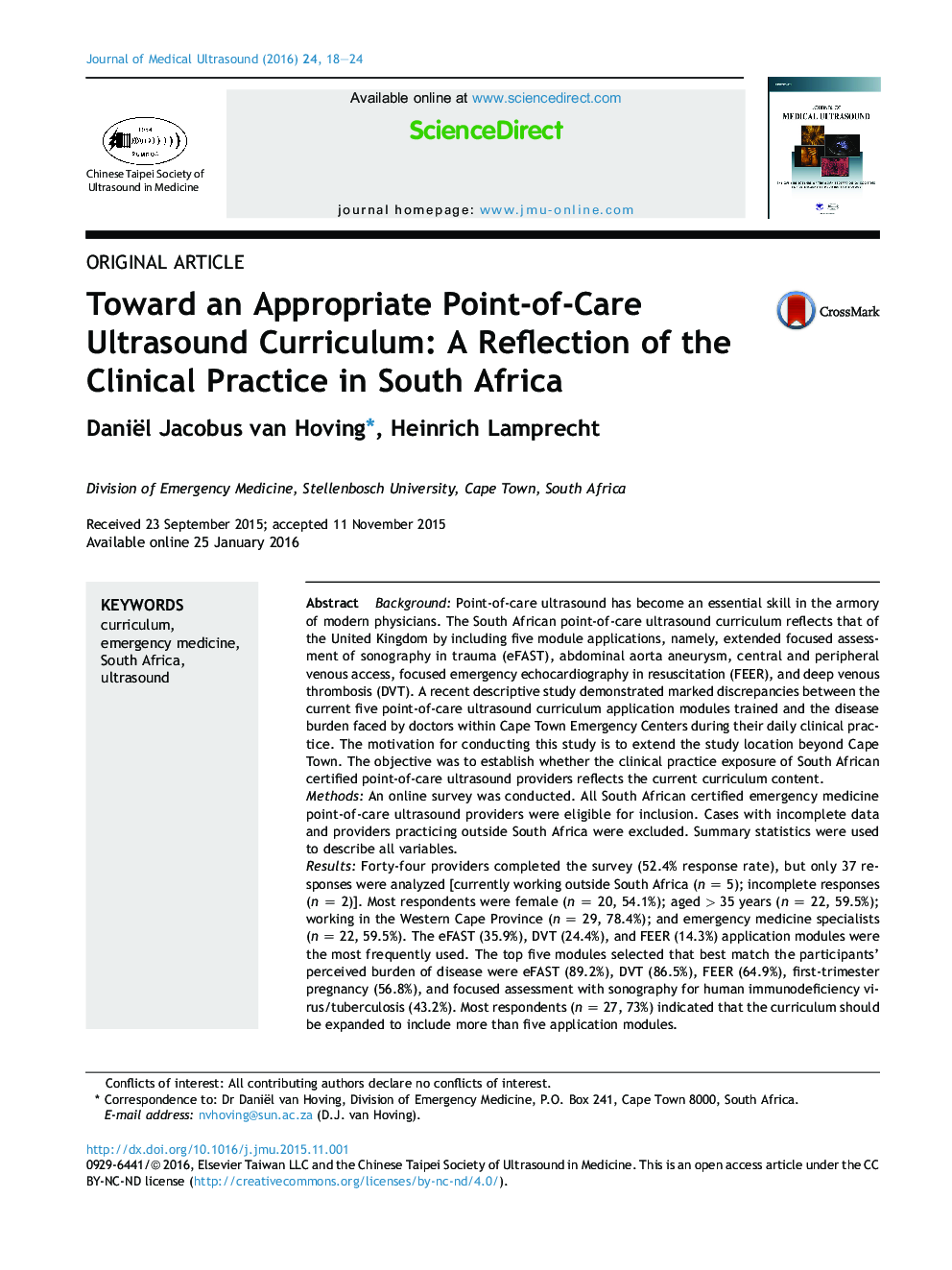| Article ID | Journal | Published Year | Pages | File Type |
|---|---|---|---|---|
| 4232920 | Journal of Medical Ultrasound | 2016 | 7 Pages |
BackgroundPoint-of-care ultrasound has become an essential skill in the armory of modern physicians. The South African point-of-care ultrasound curriculum reflects that of the United Kingdom by including five module applications, namely, extended focused assessment of sonography in trauma (eFAST), abdominal aorta aneurysm, central and peripheral venous access, focused emergency echocardiography in resuscitation (FEER), and deep venous thrombosis (DVT). A recent descriptive study demonstrated marked discrepancies between the current five point-of-care ultrasound curriculum application modules trained and the disease burden faced by doctors within Cape Town Emergency Centers during their daily clinical practice. The motivation for conducting this study is to extend the study location beyond Cape Town. The objective was to establish whether the clinical practice exposure of South African certified point-of-care ultrasound providers reflects the current curriculum content.MethodsAn online survey was conducted. All South African certified emergency medicine point-of-care ultrasound providers were eligible for inclusion. Cases with incomplete data and providers practicing outside South Africa were excluded. Summary statistics were used to describe all variables.ResultsForty-four providers completed the survey (52.4% response rate), but only 37 responses were analyzed [currently working outside South Africa (n = 5); incomplete responses (n = 2)]. Most respondents were female (n = 20, 54.1%); aged > 35 years (n = 22, 59.5%); working in the Western Cape Province (n = 29, 78.4%); and emergency medicine specialists (n = 22, 59.5%). The eFAST (35.9%), DVT (24.4%), and FEER (14.3%) application modules were the most frequently used. The top five modules selected that best match the participants' perceived burden of disease were eFAST (89.2%), DVT (86.5%), FEER (64.9%), first-trimester pregnancy (56.8%), and focused assessment with sonography for human immunodeficiency virus/tuberculosis (43.2%). Most respondents (n = 27, 73%) indicated that the curriculum should be expanded to include more than five application modules.ConclusionsThis study indicates a mismatch between the current point-of-care ultrasound curriculum and the clinical burden of disease experienced. Disease burden, disease impact, technical difficulty of ultrasound applications, and logistical barriers need to be incorporated when considering a change in the curriculum to make it more appropriate for the South African setting.
